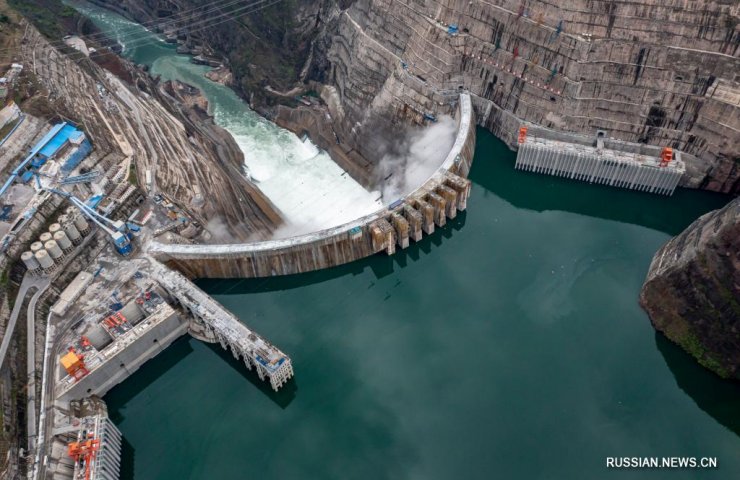The giant Baikhetan hydroelectric plant on the upper arm of China's Yangtze River first began generating electricity on Monday, Xinhua reported.
The first two 1 gigawatt (GW) turbines began operation after three days of testing. Ultimately, the project will consist of 16 such units, making its total generating capacity second only to the Three Gorges hydroelectric power plant.
The Baykhetan HPP is part of a cascade of dams on the Jinsha River, which is located in the upper reaches of the Yangtze. It is one of China's largest and most complex engineering projects, with a 289-meter high dam that took only four years to build.
As a major project in China's west-to-east transmission program, Baihetan is the largest and most technically complex hydropower project currently under construction in the world, said Chinese President Xi Jinping, adding that the project has become a major project. a breakthrough in the production of high quality equipment in China.
The project is part of a national scheme for generating electricity and delivering it to the high-energy regions on the east coast, and is also aimed at strengthening control over water flows during severe summer floods.
Provinces in eastern and central China with large populations and more developed economies have always experienced power shortages during periods of peak demand, and regions that previously relied on coal to generate electricity are struggling to find clean energy sources, mainly from regions of western China to stimulate their economy amid pressure from the central government to achieve climate change goals.
In its latest five-year plan, covering the period 2021-2025, Sichuan is aiming to complete 10 hydropower projects and begin construction on seven more.
Environmentalists have repeatedly criticized the large-scale construction of a dam on the Yangtze River and its tributaries for fears that over-engineering of the river has destroyed major habitats and damaged natural floodplains.





